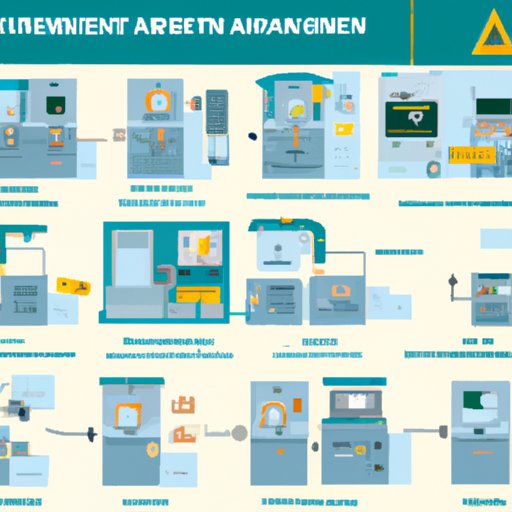
Introduction
Have you ever found yourself with a wad of cash or a handful of checks and no time to make it to the bank during business hours? In these situations, depositing money at an ATM can be a convenient and efficient solution. However, many people wonder if it is safe and effective to do so. This article will explore the pros and cons of depositing money at an ATM, provide step-by-step instructions, and offer alternatives for those who cannot or prefer not to use an ATM.
The Pros and Cons of Depositing Money at an ATM
One of the main concerns when using an ATM to deposit money is security. Banks and financial institutions place a high priority on making sure that ATMs are secure and that customer information is protected. Measures such as advanced encryption protocols and cameras are in place to ensure that your data is safe.
However, as with any financial transaction, there is always a risk of fraud or theft. You should always take precautions, such as covering the keypad when entering your PIN and making sure that the machine does not look tampered with or damaged. Additionally, you should be aware of skimming devices or cameras that can steal your information.
Overall, the decision of whether to deposit money at an ATM should be based on individual circumstances. If you are comfortable with the security measures taken by your bank or financial institution and take necessary precautions, then depositing money at an ATM can be a quick and convenient solution.
Step-by-Step Guide to Depositing Money at an ATM
If you decide to deposit money at an ATM, here is a step-by-step guide:
- Insert your ATM card into the machine and enter your PIN
- Select the “Deposit” option from the menu
- Choose the account that you want to deposit the money into
- Insert the cash or checks into the designated slot
- Confirm the amount and make any necessary adjustments
- Choose whether you want to receive a receipt
- Take your card and receipt, and you’re done!
It is important to note that different ATMs may have slightly different interfaces, so it is a good idea to read the instructions carefully before proceeding.
When depositing cash, it is best to use bills that are in good condition and not folded or torn. This will help prevent issues with the machine not accepting the bills. When depositing checks, be sure to endorse them with your signature and account number if required by your bank.
Best Practices for Depositing Money at an ATM
If you want to ensure a smooth and efficient experience when depositing money at an ATM, here are some practical tips:
- Check the hours of operation for the ATM and your bank before heading out
- Avoid peak times when the ATM may be crowded or out of cash
- Double-check the amount before finalizing the transaction
- Take your time and be sure to follow the instructions carefully to avoid errors
By following these best practices, you can minimize the risk of errors or issues when depositing money at an ATM.
What to Do if You Can’t Deposit Money at an ATM
Even with the best intentions, there may be times when you are unable to deposit money at an ATM. Some common issues include cash not being accepted, the machine being out of order, or an incorrect amount being entered.
If you encounter any of these issues, do not panic. Your best course of action is to contact customer service for your bank or visit a branch location to resolve the issue. They will be able to assist you in correcting any errors or providing alternative solutions.
The Evolution of ATM Deposits
ATM deposits have come a long way since their introduction in the 1970s. Originally, ATMs were only used for withdrawing cash. However, advancements in technology have allowed for more complex transactions such as deposits and transfers.
Today, many banks offer mobile deposit options that allow customers to deposit checks using their smartphones. Additionally, biometric authentication methods such as facial recognition and fingerprint scans are being implemented to improve security and efficiency when using ATMs.
Alternatives to Depositing Money at an ATM
If you are uncomfortable or unable to deposit money at an ATM, there are other options available to you.
One option is to visit a branch location for your bank. This is a good solution if you have a large amount of cash or need to speak with a customer service representative. You can also use mobile banking apps to deposit checks, transfer money, and manage your accounts from your phone.
For recurring payments such as paychecks or government benefits, signing up for direct deposit may be a good solution. This allows your funds to be automatically deposited into your account without the need for physical checks or ATM deposits.
Conclusion
Depositing money at an ATM can be a convenient and efficient solution for those who need to make quick transactions outside of bank hours. By weighing the pros and cons, following best practices, and taking necessary precautions, you can make informed decisions about how to manage your finances.
Remember, if you encounter any issues or are uncomfortable with using an ATM, there are alternative options available such as visiting a bank branch or using a mobile banking app.
Now that you have a better understanding of how to deposit money at an ATM and other options available to you, you can make informed decisions about your banking needs.




